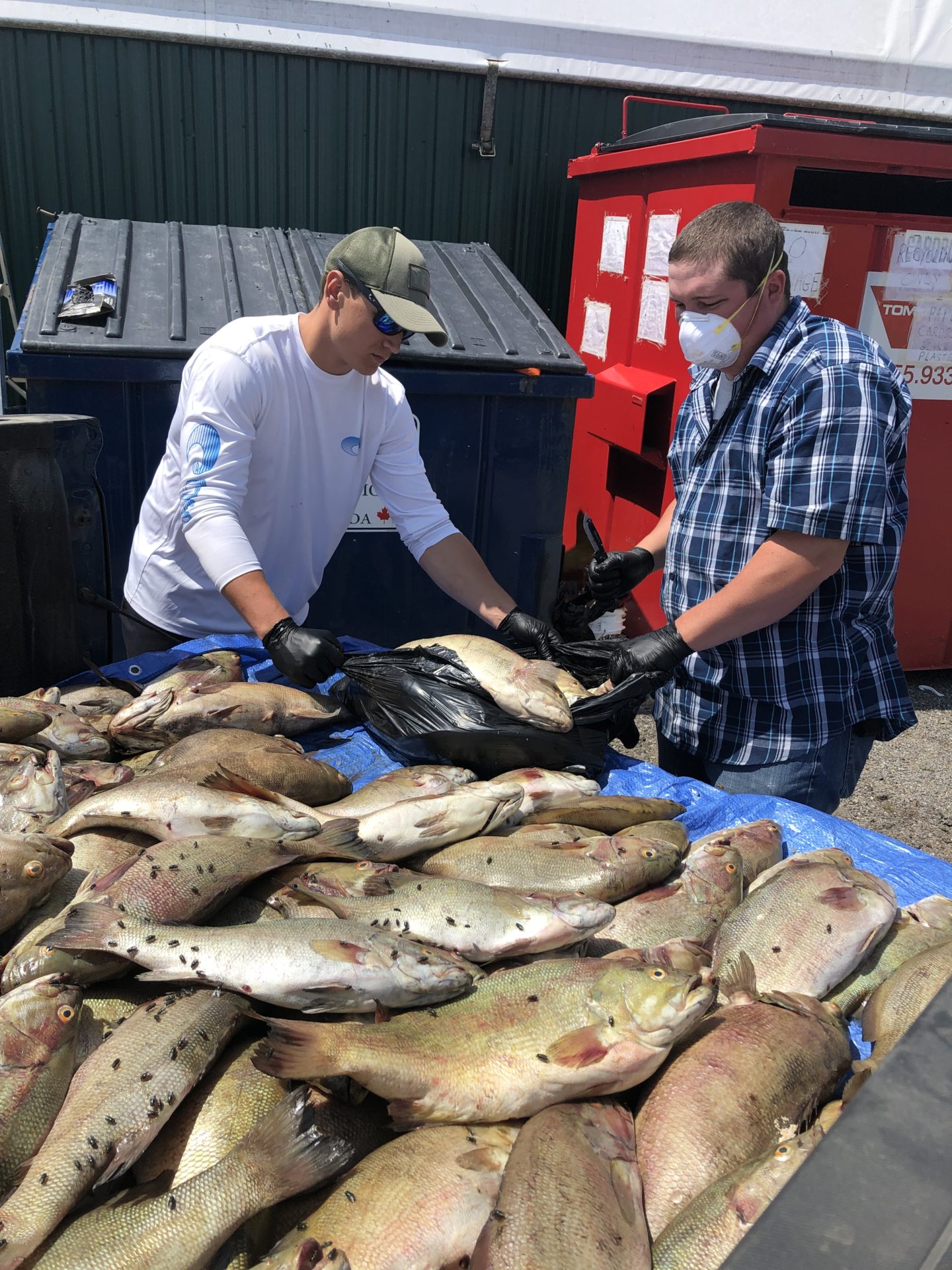Tournament trouble
Experts weigh in on the deadly July 2019 B1 Fishing event
Advertisement
In an unfortunate, yet avoidable, incident that rocked the fishing tournament world in July 2019, nearly 200 bass died due to improper fish care during the B1 Fishing event on the St. Lawrence River near Gananoque. Ben Woo, the tournament organizer, was charged with 11 conservation violations but convicted of just one in November 2020—failing to abide by the terms and conditions of the licence that allows organizers to transport fish during a tournament. After the event, which took place at Clark’s Marina in the Bateau Channel, conservation officers alongside Queens University fisheries biologist Bruce Tufts and his team found 195 dead bass. 188 of them were in plastic bags hidden at the bottom of a dumpster. Woo was fined $9,000 and banned from fishing in Ontario for five years. He now lives in New Brunswick and has said he will no longer run tournaments.

To understand how the situation should have been handled differently and what lessons could be learned, we asked four prominent figures in the conservation and fishing worlds the following two questions. Here are their full replies.
Advertisement
BRUCE TUFTS, Freshwater Fisheries Conservation Lab, Department of Biology, Queen’s University
Q: What should have been done to prevent the fish deaths?
Advertisement
- Perform regular measurements of oxygen and temperature in tanks where fish are being held. Any organization that has a history of running large scale live-release tournaments such as this organization, where live-release boats are typically employed to release the fish, has obtained permits that explain that oxygen and temperature are critical variables that must be maintained to keep the fish in good condition. The permits obtained for these events also explain that regular measurements (~every 15 mins) of these variables in tanks used for holding fish prior to release are mandatory and that records of this data should be available for inspection. Numerous witnesses that reached out to me that weekend reported that no personnel from the tournament were monitoring oxygen and temperature when I asked each of them about this. If these variables had been measured, the organization would have seen that their aeration system was not adequate to maintain oxygen levels in their relatively small holding tanks. I am certain that the large fish kill at this event was due to lack of oxygen in overcrowded holding tanks. The fact that most of the fish weighed in were large smallmouth bass exacerbated this problem because smallmouth are more sensitive to lack of oxygen than largemouth. That being said, the lack of oxygen was so severe that it eventually killed a number of the largemouth that were also weighed in at this event.
- Use a live-release boat to return fish to the main river or lake after they have been weighed. In addition to maintaining tournament fish in water with appropriate oxygen and temperature levels, organizers need a good plan to get the fish back to the main waterbody where they were caught as quickly as possible following the weigh-in. In most large events, live release boats (often more than one, so that they can work in cycles) are used to hold the fish after the weigh-in and then return them to the main waterbody. In this case, the organizer took possession of the angler’s fish after they were weighed, but had no live release boat. Instead, anglers were instructed to take the fish to relatively small holding tanks that were set up by the tournament organizer on shore. It is still unclear how the organizer intended to get the fish back to the St Lawrence River from the marina where the weigh-in was held. It is notable that this marina is a considerable distance from the main river and had very poor water quality.
- Do not delay anglers with bagged fish at holding tanks. Oxygen levels in the weigh-in bags commonly used to move fish from tournament boats to the weigh-in scales lose oxygen very quickly since they typically have a large weight of fish and a small volume of water. During this event, many anglers were observed waiting for long periods of time at the holding tanks (which were also warm) while the organizer was arranging social media coverage of the weigh-in.
- Choose a weigh-in site on the main waterbody, or very close to it, to minimize distances that fish need to be moved and to provide easy access to well oxygenated water to fill and refresh holding tanks. As mentioned, the site chosen for this weigh-in was some distance from the main waterbody. The marina where the weigh-in was held was at the far end of a back channel and shallow. Water in the marina was warm, muddy and probably poorly oxygenated. Witnesses reported that this water was used to fill the tanks used to hold the fish for at least one, if not both, days of this event.
- Tournament organizers have a responsibility to become familiar with available literature on best practices for live release tournaments. A brochure of best practices for live-release tournaments (Tufts and Morlock 2004) is well known amongst the Canadian tournament community and available on the internet. This document discusses all of the issues mentioned here in detail. Similar content can also be found in documents published by tournament organizations such as B.A.S.S. There is no excuse for tournament organizers to claim that “they didn’t know” when it comes to these issues, especially since they are taking responsibility for so many big old fish that are the best brood stock in the waterbodies where events are held.
- Tournament organizations should designate a knowledgeable, trained individual who is responsible to monitor water quality in all holding tanks during the weigh-in and to make important decisions on fish care. In the absence of an individual who is focussed on fish care, it is easy for this aspect to get overlooked. In this case, an organizer who was running events for profit (not all events are for profit, but some are) was not willing to allocate appropriate financial resources towards fish care.
Q: What should have been done after it happened rather than put the fish in a dumpster?
- Stop the event after there was substantial mortality during the first day.
- Immediately reach out for advice from experts when there was a problem. It is noteworthy that Queen’s University was ~20 minutes away from the weigh-in site where this event took place. We are well known as local experts in this area and have made it widely known that we accept any tournament mortalities (we even have a permit for this) and process them to obtain as much biological information as possible, which builds on the science for our local fisheries. This organizer knew all of these things. We can also provide expertise on problem areas at events and how to avoid them. Instead of stopping the event, or reaching out to local experts, the organizer tried to hide the fish kill after the first and second day and hoped to leave town with the profits from the event without drawing attention to the fish kill. Other well-known experts are available and have even worked previously with this organizer, but were not contacted for advice after the fish kill on the first or second day. It is noteworthy that after my lab participated in finding the fish in the dumpster, we took them back to Queen’s and processed them for ages and other biological information that goes into our database.
- Contact the OMNRF and report the fish kill in the timeframe indicated on the permit (I believe this is 48 hrs). The organizer only talked publicly about the fish kill when he knew the fish had been found in the dumpster and he was caught. He likely heard about this from anglers who were being interviewed by a CO from the OMNRF after the fish had been found on the Monday following the event. By mid-week, the organizer also began making up stories about the fish kill being mysterious. They even reported measuring water quality variables once they were caught, but were clearly making up numbers out of thin air.
- Do not allow the fish to spoil (which is illegal). If not donated to science, dead fish could have been given back to anglers for food, or donated elsewhere for food (something that is reportedly done at some U.S. events).

